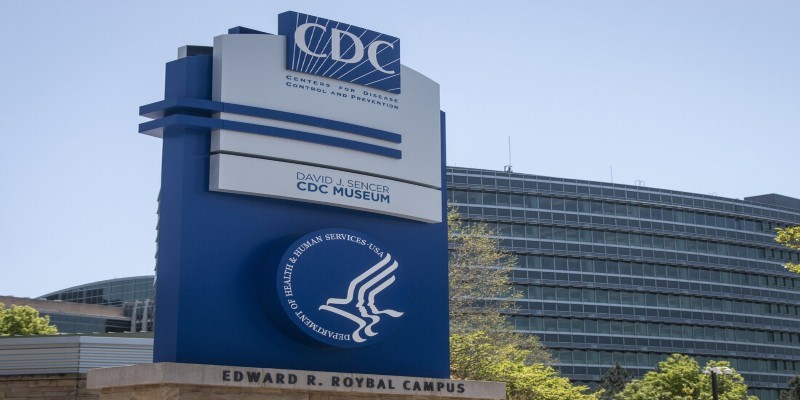
How To Address The Antibiotic Resistance Crisis?
 Health & medical treatment
Health & medical treatment Antibiotic resistance is a growing threat to public health worldwide. What began as a concern in the medical community has now escalated into a global crisis. Resistance occurs when bacteria evolve to withstand the drugs designed to kill them, rendering many antibiotics ineffective. The result? Infections that were once easily treatable can become deadly. The consequences of this crisis are far-reaching, affecting not only the treatment of common illnesses but also life-saving medical procedures, such as surgeries and cancer treatments, which rely on effective antibiotics to prevent infections. This article will delve into the root causes of antibiotic resistance, its impact, and the critical measures needed to tackle this looming challenge.
Antibiotic resistance is a growing threat to public health worldwide. What began as a concern in the medical community has now escalated into a global crisis. Resistance occurs when bacteria evolve to withstand the drugs designed to kill them, rendering many antibiotics ineffective. The result? Infections that were once easily treatable can become deadly. The consequences of this crisis are far-reaching, affecting not only the treatment of common illnesses but also life-saving medical procedures, such as surgeries and cancer treatments, which rely on effective antibiotics to prevent infections. This article will delve into the root causes of antibiotic resistance, its impact, and the critical measures needed to tackle this looming challenge.
The Growing Threat Of Antibiotic Resistance
Antibiotics revolutionized medicine in the past, saving millions of lives by treating bacterial infections that were once fatal. However, overuse and misuse of these drugs have given rise to antibiotic-resistant bacteria, commonly known as "superbugs." According to the World Health Organization (WHO), antimicrobial resistance (AMR) is responsible for over 1 million deaths annually worldwide, and this number is expected to rise sharply if left unchecked.

The crisis is not limited to a single pathogen. Bacteria like Escherichia coli, Staphylococcus aureus, and Klebsiella pneumoniae are becoming resistant to various antibiotics, including last-resort drugs such as carbapenems. When others fail, these are the antibiotics of choice, and their resistance spells disaster. For instance, resistance to common antibiotics like penicillin is widespread, and tuberculosis strains are becoming increasingly resistant to treatment. The emergence of resistant fungal infections, such as Candida auris, is also an alarming trend, adding to the complexity of the crisis.
Why Antibiotic Resistance Is Escalating
The overuse and misuse of antibiotics primarily drive the rapid spread of antibiotic resistance. In healthcare settings, antibiotics are often prescribed unnecessarily or inappropriately. For example, antibiotics are sometimes given for viral infections like the common cold, against which they have no effect. Similarly, in agriculture, antibiotics are frequently used in livestock farming to promote growth or prevent disease in healthy animals, further contributing to the development of resistance.

Moreover, inadequate infection control measures in hospitals, poor sanitation, and insufficient access to healthcare in many parts of the world also exacerbate the spread of resistant bacteria. In low-resource settings, where access to clean water and vaccines is limited, infections can spread rapidly and unchecked. These factors create a vicious cycle where bacteria continue to evolve and spread, making it harder to treat infections effectively.
The Impact Of Antibiotic Resistance
The consequences of antibiotic resistance are profound. Infections that were once treatable with a short course of antibiotics can now lead to prolonged illnesses, disability, and death. This increases healthcare costs and puts additional pressure on already strained healthcare systems. Surgical procedures that rely on antibiotics to prevent infection, such as organ transplants, caesarean sections, and cancer treatments, become riskier as the effectiveness of antibiotics declines.

The economic burden of antibiotic resistance is also significant. According to the Organization for Economic Cooperation and Development (OECD), resistance could cause an additional 10 million deaths annually by 2050, resulting in a global economic loss of $100 trillion. This highlights the urgency of addressing the issue—not just for public health reasons but also for financial stability.
Tackling Antibiotic Resistance: Global And Local Efforts
To combat antibiotic resistance, a multi-pronged approach involving governments, healthcare systems, and the public is required. International organizations like the WHO and the Centers for Disease Control and Prevention (CDC) have raised awareness and implemented strategies to curb resistance.

One key strategy is antimicrobial stewardship. This involves promoting the responsible use of antibiotics and ensuring they are prescribed only when necessary and in the correct doses. In healthcare settings, infection control measures, such as hand hygiene, isolation protocols for resistant patients, and cleaning practices, are essential to prevent the spread of resistant bacteria.
Another critical area of focus is the development of new antibiotics. The global research community is working on creating novel antibiotics and alternative treatments like bacteriophage therapy (which uses viruses to target bacteria). However, this requires significant investment and collaboration across borders. The WHO's Global Antimicrobial Resistance and Use Surveillance System (GLASS) is a valuable tool for monitoring trends in antibiotic resistance and informing global strategies.
Policy Initiatives And International Collaboration
One of the most significant developments in recent years has been recognizing antibiotic resistance as a global health emergency. In 2024, the United Nations held a high-level meeting on antimicrobial resistance (AMR), and world leaders committed to specific targets, such as reducing bacterial AMR deaths by 10% by 2030. This commitment and efforts from national governments to implement national action plans for AMR signals a shift toward more coordinated global action.

Countries are also working to strengthen the regulation of antibiotic use and ensure better access to diagnostics and treatments, especially in low-income regions. The WHO’s priority pathogens list helps guide investment in new antibiotic development by identifying the most dangerous and resistant bacteria.
Looking Ahead: A Call To Action
The antibiotic resistance crisis is a growing and urgent challenge that requires global cooperation and action. While progress has been made, much work remains to be done. Governments must increase funding for antibiotic research, while healthcare systems need to implement stricter infection control practices. Public awareness of the risks of misuse and overuse of antibiotics must be raised, and agricultural practices must be improved to reduce the use of antibiotics in livestock.
At the same time, individuals must play their part by following medical advice, avoiding self-medication with antibiotics, and supporting efforts to regulate antibiotic use in farming. Only through a concerted, unified approach can we hope to slow the rise of antibiotic resistance and ensure that life-saving antibiotics remain effective for future generations.
Conclusion
The antibiotic resistance crisis is a multifaceted issue that impacts health systems, economies, and lives. Addressing this issue will require global cooperation, responsible antibiotic use, innovation in medical research, and public education. The urgency of the situation cannot be overstated, but with concerted effort, we can take significant strides toward mitigating this growing threat.
